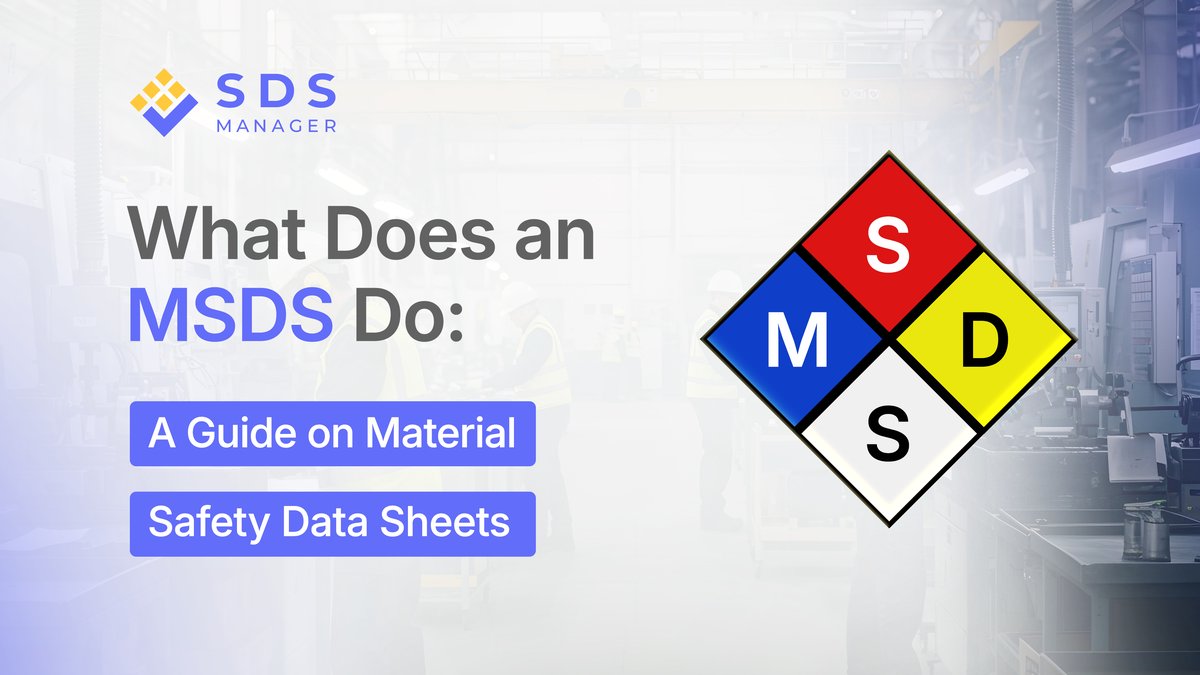

Material Safety Data Sheets (MSDS) are documents that provide chemical safety information intended for both employers and workers. It serves as a communication tool to help those handling chemicals understand the hazards and safety precautions involved.
Structure of an MSDS
Material Safety Data Sheets (MSDS) are designed to protect employees, contractors, and emergency personnel (paramedics or firefighters) by detailing what a substance is, what it can do, how to use, store, and safely dispose of it and measures to take during accidents or exposure. This information is typically integrated and described under different sections.
The structure of an MSDS is not globally standardized, but it generally consists of 8 to 16 sections, depending on the issuing country or manufacturer. Here's a breakdown of the typical 9-section MSDS format, which has been common in North America:
| Section Name | Description |
| Product Identity | Provides the product’s name, chemical synonyms, CAS number, and manufacturer’s contact details. Ensures correct identification and access to further information. |
| Physical and Chemical Data | Describes appearance, odor, melting/boiling points, flammability, and solubility to explain chemical behavior under various conditions. |
| Fire and Explosion Hazard Data | Explains flammability, suitable extinguishing methods, and special fire risks to guide prevention and response. |
| Reactivity Data | Covers chemical stability, conditions and substances to avoid, and hazardous byproducts formed during decomposition or fire. Helps prevent dangerous reactions. |
| Health Hazard Data | Outlines exposure routes, symptoms, affected organs, and toxicity to aid in recognizing and managing health risks. |
| Preventive Measures | Recommends protective equipment, safe handling/storage practices, hygiene, and spill control to minimize exposure. |
| Emergency and First Aid Measures | Provides steps for treating exposure via skin, eyes, inhalation, or ingestion, plus emergency contact numbers. |
| Additional Information | Includes references, regulatory notes, and the MSDS’s last update date to verify and trust the data. |
| Manufacturer / Supplier Data | Lists company contact information for easy access to support or clarification. |
Some MSDSs may also include ecological, disposal, and transportation information, although these are more commonly found in safety data sheets (SDS).
What Does MSDS Do in Practice?
An MSDS functions as a multi-purpose safety and compliance document. Here's how it helps organizations:
- Acts as a Training Tool: MSDSs are often referenced in safety training sessions to explain chemical-specific hazards and precautions. Workers are trained on how to find and interpret them.
- Enables Emergency Response: If a spill or exposure occurs, the MSDS provides quick-reference data on first aid, firefighting, and cleanup protocols. This can prevent injuries and escalation.
- Supports Compliance and Audits: In regulated industries, maintaining a complete MSDS library is a legal requirement. Inspectors often request access to MSDSs during audits to assess compliance.
- Facilitates Risk Assessment: EHS professionals use MSDSs to conduct chemical risk assessments, identify required PPE, and implement workplace controls.
MSDS vs. SDS: Why the Difference Matters
While SDS is now the standard in many countries (including under OSHA), MSDSs may still be used across smaller organizations, older systems, and in countries that haven't yet adopted the Globally Harmonized System (GHS). MSDS formats are typically non-uniform, which can pose challenges in consistency, readability, and accessibility. SDS follows a standard 16-section format under GHS, while MSDS formats may vary depending on the supplier, country, or industry practice.
Ensuring a Safe Workplace Environment
Whether you refer to an MSDS or SDS, the core intent remains the same: to convey critical chemical hazard information to those who need it most, allowing organizations to ensure workplace safety and compliance.